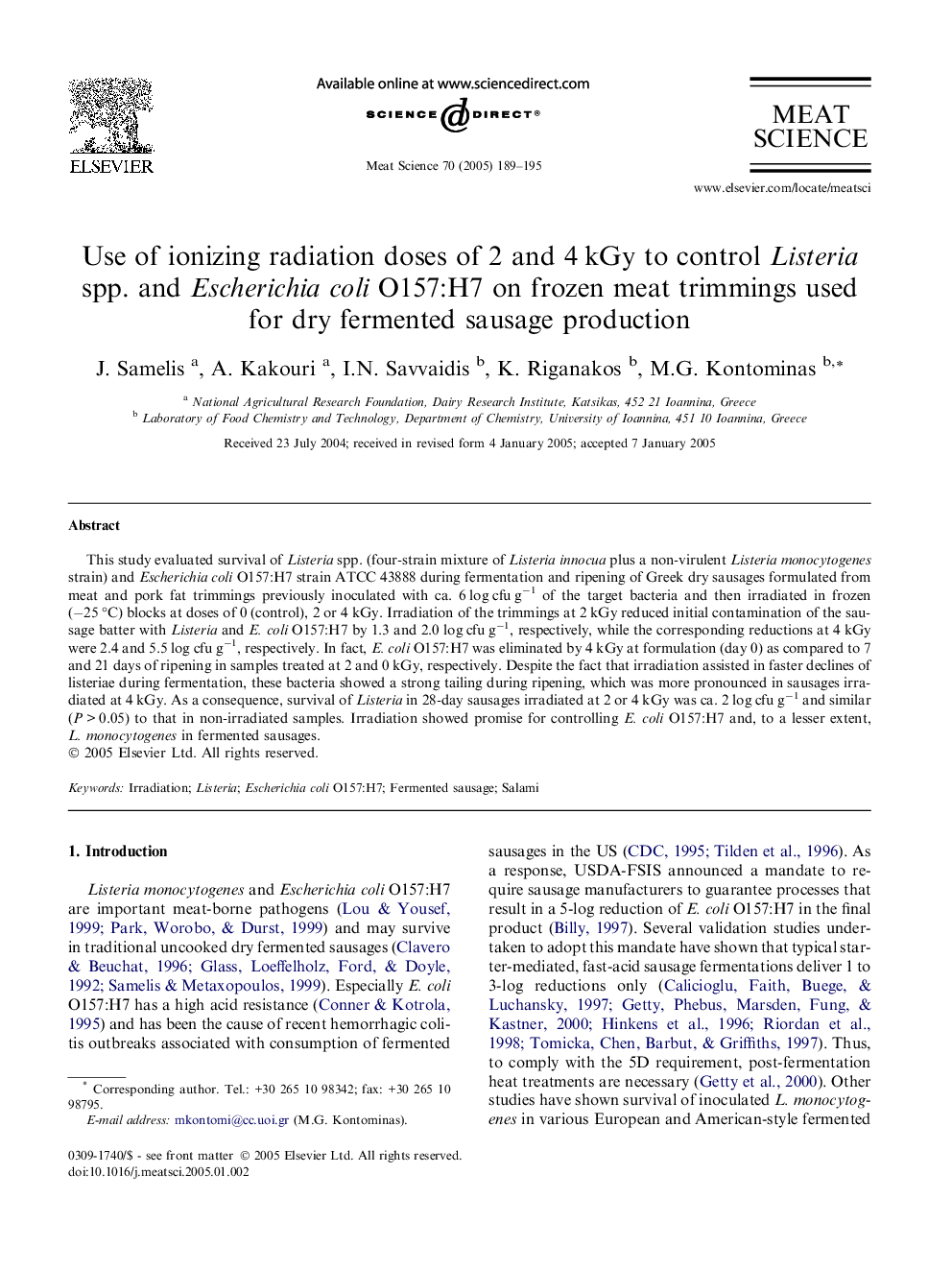| Article ID | Journal | Published Year | Pages | File Type |
|---|---|---|---|---|
| 8983668 | Meat Science | 2005 | 7 Pages |
Abstract
This study evaluated survival of Listeria spp. (four-strain mixture of Listeria innocua plus a non-virulent Listeria monocytogenes strain) and Escherichia coli O157:H7 strain ATCC 43888 during fermentation and ripening of Greek dry sausages formulated from meat and pork fat trimmings previously inoculated with ca. 6 log cfu gâ1 of the target bacteria and then irradiated in frozen (â25 °C) blocks at doses of 0 (control), 2 or 4 kGy. Irradiation of the trimmings at 2 kGy reduced initial contamination of the sausage batter with Listeria and E. coli O157:H7 by 1.3 and 2.0 log cfu gâ1, respectively, while the corresponding reductions at 4 kGy were 2.4 and 5.5 log cfu gâ1, respectively. In fact, E. coli O157:H7 was eliminated by 4 kGy at formulation (day 0) as compared to 7 and 21 days of ripening in samples treated at 2 and 0 kGy, respectively. Despite the fact that irradiation assisted in faster declines of listeriae during fermentation, these bacteria showed a strong tailing during ripening, which was more pronounced in sausages irradiated at 4 kGy. As a consequence, survival of Listeria in 28-day sausages irradiated at 2 or 4 kGy was ca. 2 log cfu gâ1 and similar (P > 0.05) to that in non-irradiated samples. Irradiation showed promise for controlling E. coli O157:H7 and, to a lesser extent, L. monocytogenes in fermented sausages.
Related Topics
Life Sciences
Agricultural and Biological Sciences
Food Science
Authors
J. Samelis, A. Kakouri, I.N. Savvaidis, K. Riganakos, M.G. Kontominas,
